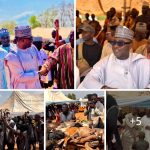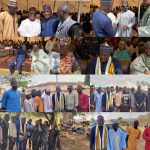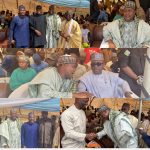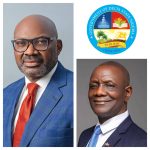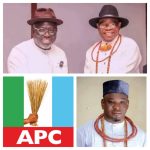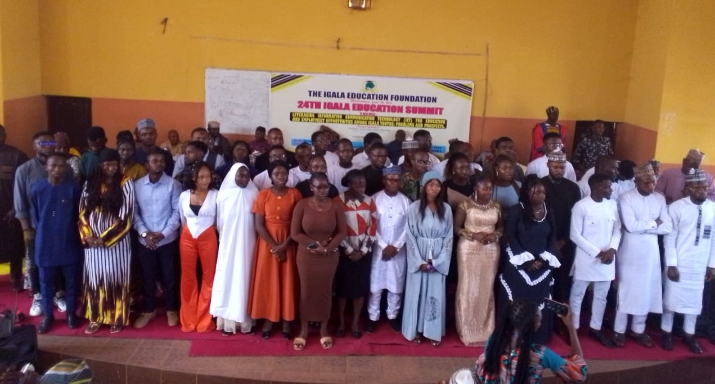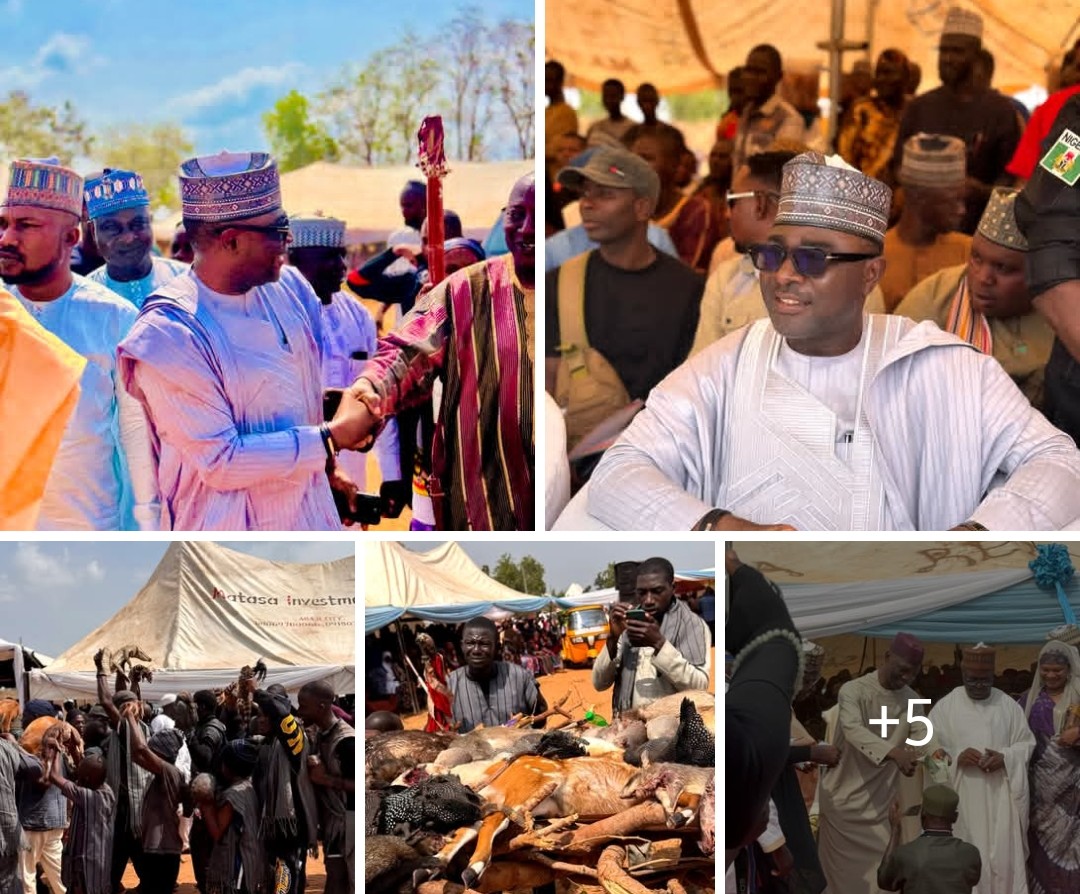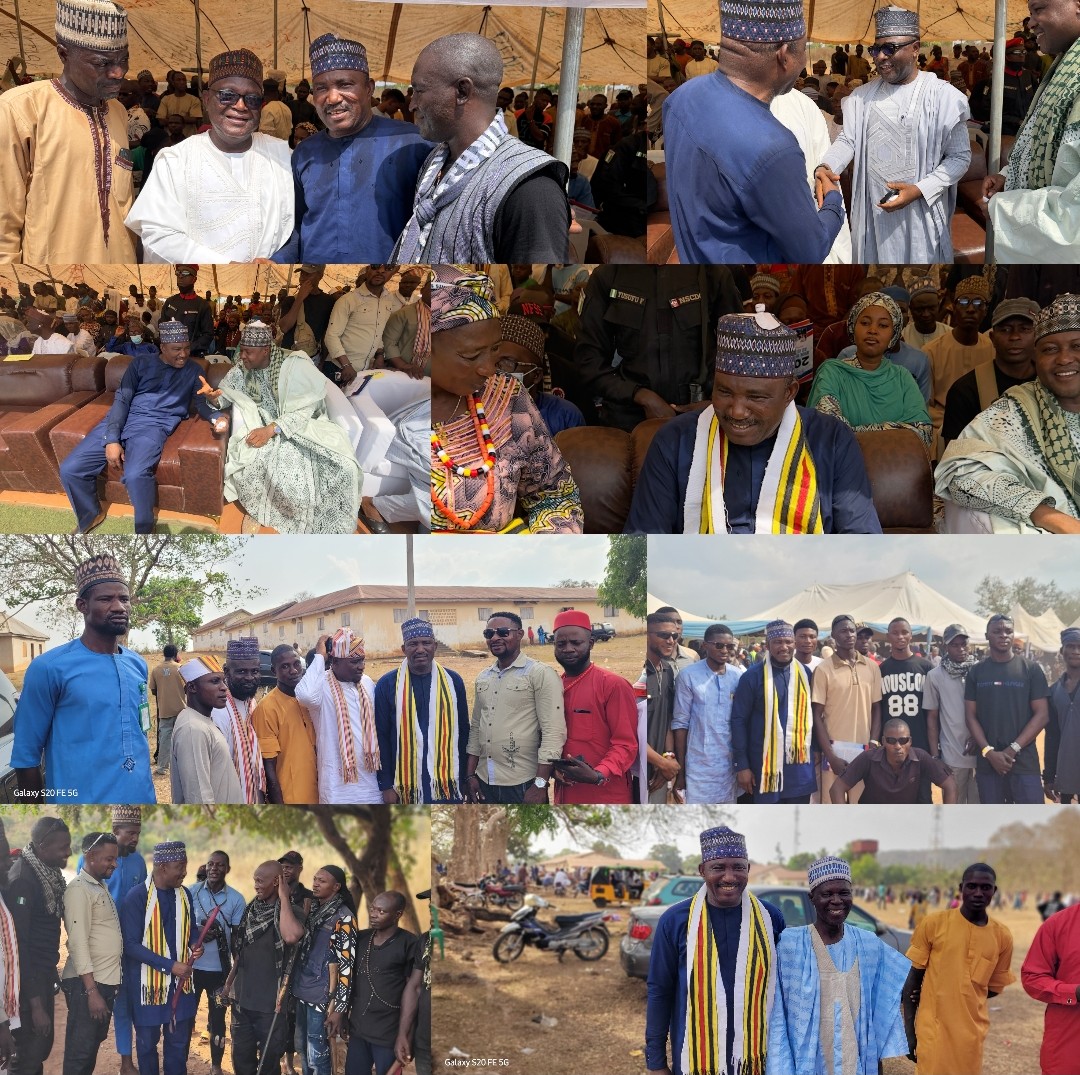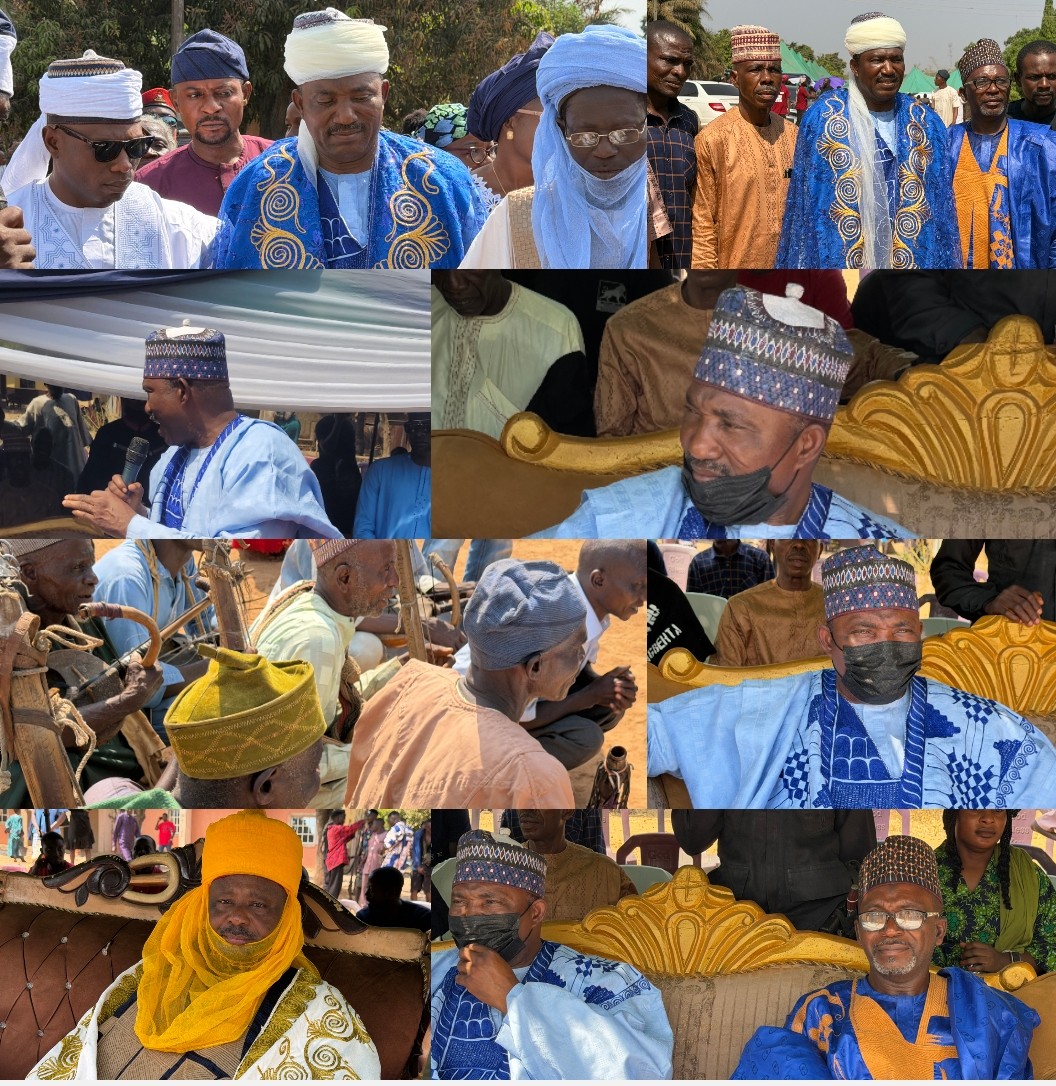24th Igala Education Summit, Prof Armstrong Idachaba Advocates for Responsible Social Media Use
BY ABUBAKAR YUSUF.
Professor Armstrong Aduku Idachaba, the former NBC Director General, noted that the erosion of family values, cultural dignity, and reorientation is lost without the responsible use of social media platforms.
Professor Idachaba, Dean of Management Sciences at Veritas University, Abuja, gave the declaration during the presentation of a lead paper at the annual event held last week, which focused on “Leveraging Information Communication Technology for Education and Employment Opportunities among Igala Youths: Problems and Prospects.”
Idachaba who solicited a change of heart in deploying social media platforms to the public asked igala youths, extraction to take caution and also suggested the need to impose sanctions against erring youths by elders , stakeholders and traditional rulers, as well as call their families to order.
He expressed worries over the unabated trend and damages the negative use of social media has caused, enjoining the igala people to explore the positive side of social media as it is been done in other side of the world.
“A very disturbing trend is the quantum of immoral and even vulgar content coming from especially Igala women- who are supposed to be the epitome of our culture – their content embarrassingly debasing. ”
“The first of an increasing debased morality is one early video of a girl who brazenly attacked men of ‘Ofe ekpana’ to get jobs. There is Georgina Edime –promoting promiscuity before marriage- and she is married- “epi kpai obu- Epi Anyiga owo’-. What in traditional Igala is elifo.There is also a seemingly deranged one called Unstoppable- Theresa Ojochenemi Musa, she must be stopped for good of our youths.
Our elders and traditional rulers must call them and their families to order.”
The full message in the paper as follows..
LEVERAGING INFORMATION COMMUNICATION TECHNOLOGY FOR EDUCATION AND EMPLOYMENT OPPORTUNITIES AMONG IGALA YOUTHS: PROBLEMS AND PROSPECTS.
By
Professor Armstrong Aduku Idachaba
Dean Management Sciences-Veritas University, Abuja
Delivered at 24th Igala Education Foundation.
Kogi State University, Ayingba, Dec 30Th, 2024
It is indeed an honor for me to be the speaker at this year’s edition of the Igala Education Summit. Over the years many have asked me when they encounter me whether I am related to the late ICON and I am sure some of you here may be nursing in your mind the same question.
Yes Professor Francis Sulemanu Idachaba, the great International scholar is indeed my Uncle. I grew up as a kid to know him as my Uncle- he and my father were school mates, brothers at Opa Ata and had the same child hood- him and the late AJ Peters- they were closely knit.
They visited each other regularly. My father used to take me to the house of Aya ( Prof’s mother who is a blood relation of my own father). Sure, you see he is my Uncle, it is by coincidence though we got to share the same Surnames.
God bless his soul, he was always interested in our wellbeing Mike and I, what is more, he, it was who gave me the note that took me to NBC where God elevated me to the status of Director-General. I wish he stayed on a little to follow my growth, I mean him and his brother my father.
But his mentoring ethos lives years and decades after him, that is the seed of a visionary, an accomplished futuristic achiever.
I therefore thank all of you who have kept his vision and legacy alive by this foundation.
I specially thank my own mentee in whom I am well pleased, a robust energetic, visionary, intelligent genius-Engineer Abdul Audu and his team for making me the speaker of this year’s edition.
As we are aware the Theme this year is – LEVERAGING INFORMATION COMMUNICATION TECHNOLOGY FOR EDUCATION AND EMPLOYMENT OPPORTUNITIES AMONG IGALA YOUTHS: PROBLEMS AND PROSPECTS.
INTRODUCTION.
The subject matter of this Lecture, couldn’t have come at a more auspicious time, especially for we as Igala, a people reserved in their culture and protecting of their heritage now’ threatened ‘on all sides by the Internet.
This paper therefore explores and analysis ICT import and effect on Igala youths especially. Among the issues I interrogate in this paper are the impacts of converged media content, for instance in promoting efficiency, synergy, simplification, socialization, business, entertainment, information and multimodality.
The paper also examines the fears accompanying the use of converged media which includes but not limited to all kinds of misuses-socio-cultural, abusive words and impingent of rights, privacies and privileges of citizens.
It deeps into the historical context of social media usage in Igala land , exploring how the concept of media convergence has radically altered our ethical foundations as a people.
The paper makes recommendation for appropriate maximization of social media in Igala land.
THE CONCEPT OF ICT
The reform in the communication sectors as a result of liberalization and digital technology in the Communication sector has converged the distinct communication subsectors into one. (Mgbeokwere;2018). This new phenomenon is called Communication or Media Convergence.
The Internet, has made convergence possible. It has blurred the differences that exist between the old broadcast media and the new broadcast media and created a meeting point or an alignment for them. Thus, we not only have traditional radio and traditional television stations, but we also have internet radio and internet television.
Without doubt there is increasing discussion on the issue of media Convergence and its impact on the people, media industry and society. Convergence as a term is used by various academic disciplines to describe and analyze manifold processes of change toward uniformity. Its application in the communication sector is often referred to as media convergence. It also encompasses or involves valuable approaches to describe, characterize, analyze and understand the digital creative economy (Nwammuo and Nwafor, 2019). It overlaps with some sub-sectors between communication and digital creative industries such as publishing, music, broadcasting, advertising, film and games. These subsectors are even growing because of convergence. Beyond that, the consequences of media convergence are also witnessed in other parts of innovative industries, such as museums, libraries and design in particular. New digital media technology and services are considered as central drivers of creative industries (Nwammuo and Nwafor, 2019).
According to Abdulhammed and RugayyahSub-Saharan Africa is home to the majority of nations that have lagged behind in the field of media convergence (Abdulhameed and Ruqayyah, 2022).
A key feature of the Converged era is the centrality of user generated contents. Abdulhameed and Ruqayyah (2022) note that –
The production, distribution, access, and reuse of information, knowledge, and entertainment by users have changed as a result of media convergence. This has led to increased involvement, autonomy, and diversity. The growth of user-generated content and people’s transition from audience to participants is a significant change brought on by media convergence. Content that was formerly exclusive to particular communication media, such as print and broadcast, particularly newspapers, magazines, radio, television, and cinema, is now accessible to billions of people. This paradigm shift, brought about by technological advancement, has affected how individuals in society think, feel, act, and even how the society operates as a whole (p. 40).
In the words of Taylor (2015), former Secretary- General of the Commonwealth Telecommunications Organization,
The internet (ICT) today has become a viable delivery mechanism for audio and video broadcast services, whether it is live programs, social media, or on- demand services … It provides consumers today with unprecedented opportunities – to choose how they watch the programmes – either through traditional ‘linear’ broadcast of a news bulletin or by instant access to individual news items as may be determined by the user rather than the news editor. (p. 14).
Types of Media Convergence
Media Convergence is divided in three types, including: Social Convergence, Industrial /Economic Convergence and cultural convergence (Yau, 2020).
Social convergence according to Yau (2020), is identified by multi-screen, multi-tasking environment, which enables connectivity between different groups or users. What we commonly now refer as the social networking sites. Tik tok, Google, Face Book etc.
Industrial and Economic Convergence refers to the merger of media conglomerates such as Viacom, Disney, NBC, Time Warner who for economic reasons form alliances with corporations such as paramount pictures, ABC, CBS respectively to form new digital media giants.
Cultural convergence is a concept of novel formats and platforms for creativity among various media technologies across different industries and consumer groups. This integrates groups technologies and societies.
Social Media in Nigeria
In Nigeria, the social media is the quintessential platform for media convergence, the ubiquitous platform is easily accessible to anyone with internet access, opening doors for organizations to increase their brand awareness and facilitate conversations with the customer. Additionally, social media serve as a relatively inexpensive platform for organizations to implement marketing campaigns.
According to the NCC, there are approximately 122 million active Internets-users, which corresponds to half of the total population. (Kogi state according to the Internet 2024 is 3.29 Million)
7.5 percent or over 80 Million of them are young between 18 and 35 years. Statistica (2024) notes that Nigeria had 31.6 million active social media users earlier this year, with WhatsApp being the most popular platform used in the country, having close to 95 percent of users. Facebook, You Tube, and Instagram followed as the most used social media platform as at July 3rd , 2023. Facebook 59.55 percent, Twitter 13.28 percent, Instagram 10.6 percent. Nigeria is top of a list of 29 countries with highest daily time spent on social media across the world, with 4 hours 20 minutes spent on social media per day (Statistica-2024).
The most popular social media platforms are:
Platform Users
Facebook 27 million
YouTube 24 million
Instagram 10 million
Twitter 9.3 million
MTN, AIRTEL, GLO and IROKO TV, Netflix are fast becoming major platforms for content development and distribution in Nigeria.
User Needs
The benefits of media convergence can be submerged in the following areas:
The Media theory of Uses and Gratification of the Media illustrates how and why people have different needs of the media.
Uzuegbunam (2020) describing the functionality of media usage in his article-Digital Communication Technologies: Concepts, Practise and Trends, notes the following as some uses of the social media in Nigeria, Advanced learning, knowledge and seamless information sharing, using multimedia formats comprising text, video, podcast, video conferencing etc-Offering interactive, one to many and many to many communication across multimedia platforms.
-fostering business relations and creating job opportunities, thus engineering digital/gig economy
-Enhancing health information –seeking and medical effectiveness. Example is use of digital communication technologies to more easily spread useful information during health crises such as the Covid 19 pandemic.
-Advancing the frontiers of political communication by enabling direct communication among political actors such as governments, citizens and politicians. Example is the use and impact of digital technologies in politics and democracy (for example, civic participation, campaigns and elections)
-creation of networked publics, virtual public spheres or network society where categories of people can congregate to deliberate and organise for social and cultural purposes. Examples are social movements (for instance occupy Nigeria and Arab spring) which utilize platforms such a Twitter and Facebook to fight oppressive systems and rally round a common cause.
Ability for people to create online profiles where they forge a certain identity, self-represent and build a following /brand. A good example is the rise of social media influencers today.
-Provision of a valuable opportunity for civil society organisations (NGOs, academic groups, activist groups, charitable foundations, community organisations, cooperatives, independent media groups etc) to engage with their members, galvanise public support and online activism at low cost.
Social media advertising and marketing are enabling companies and corporate organisations to break new grounds by promoting their goods and services on line, targeting their customers/follers and perfecting online retailing.
Blogs, websites and audio-video platforms present a paradigm shift in de institutionalization of the mass media by affording ordinary citizens the chance to own, self-publish, produce and disseminate their own media contents to the world.
-Enabling alternate avenues for dating and romantic relationships by affording people opportunities to meet like minds with whom they can forge intimate relationships. Examples include every day social media like face book and instagram as well as social dating apps like Tinder, OK Cupid, etc
-Offering opportunities to play, relaxation and entertainment. Besides the gratifications derivable from chatting and interaction through social media, video/ computer games are fast becoming popular, often replacing physical play activities such as folktales, football, outdoor games. Through mobiles and computers, games can offer people support for emotional and physical wellbeing. Enabling ordinary citizens to participate in democratic citizenship by using their digital devices and social media platforms to report the everyday happenings and events they witness, for wider public consumption on social media. This practice has become known as citizen journalism.
THE IGALA YOUTH.
Who then is the Igala youth. According to Wikipedia (2019) Youth is the time of life when one is young, and often means the time between childhood and adulthood (maturity). It is also defined as “the appearance, freshness, vigor, spirit, etc., characteristic of one who is young”.
Around the world, the English terms youth, adolescent, teenager, kid, and young person are interchanged, often meaning the same thing, but they are occasionally differentiated. Youth can be referred to as the time of life when one is young. This involves childhood, and the time of life which is neither childhood nor adulthood, but rather somewhere in between.
The United Nations defines youth as persons between the ages of 15 and 24 with all UN statistics based on this range, the UN states education as a source for these statistics.
But youth is not only about age, according to Robert Kennedy “This world demands the qualities of youth: not a time of life but a state of mind, a temper of the will, a quality of imagination, a predominance of courage over timidity, of the appetite for adventure over the life of ease.”
Youth is an experience that may shape an individual’s level of dependency, which can be marked in various ways according to different cultural perspectives. Personal experience is marked by an individual’s cultural norms or traditions, while a youth’s level of dependency means the extent to which they still rely on their family emotionally and economically.
A critical look at the above definition of the youth indicates significantly that a youth’s experience is ‘marked by an individual’s cultural norms and traditions’. I therefore challenge us to consciously interrogate the cultural background of Igala youths. Is there really a cultural ethos for the Igala youth. Igala youths are currently into several vices- Yahoooism, cultism, political thuggery, bullying, stealing and other immoral vices.
The Igala Youth is central in Igala cosmology. The youths are called ‘Agbadufu’ whist the female youths are called ‘Amiigbele’ There is a youth leader in every community, he is called Achokolobia. In traditional Igala according to Musa, in Igala society the family is the platform of Igala communal life. Elders and age-groups remain the basis for social articulation. When the leaders of thought (elders) decided about a given issue, they will contact the youths through the Achokolobia. If the Achokolobia informs the youths and they agree, it means the bill have sailed through.
He further notes that -assuming the youths disagreed with the decision of the elders, the Achokolobia will equally pass the opinions of the youths to the elders. In case it is stalemated, the youths and elders will discuss the sources of disagreement in the open. Whatever decisions emerged on that day will be sealed as final. The logical outcome of this collective decision is collective responsibility. That is why the Igala people are known for “yes as yes” and “no as no”.
Igala youths have played key roles in the evolution of the Igala land – The youths have always been the beacon for development in Igala land.
According to Abdullahi,right from time immemorial, the potential of Igala youths were not in doubt , Ahmadu Ali rose to be president of Nigerian students in Britain despite his minority background. He states that when Kings college in lagos was opened an Igala boy [Francis Idachaba and others-MM Abdul etc] was among the first 5 students enrolled to the elite school. Same thing happened when ABU opened. The quest for education by Igala youths was so high that they travelled to very far locations to study.The first Igala youths excelled as youths at their own time -Dr. Moses Egene Adah. He was one of the pioneer Commissioners on the creation of Benue State, how old was Egene Adah when he was appointed Commissioner? In the 19 79, Dr. Abubakar Usman, Dr. Yahaya E. Atanu and Dr. Samson S. Ameh dropped their academic robes for politics, they were youths.
Abdullahi Musa (2008) draws our attention to the following historical facts-In the Balewa Administration shortly after independence Igala was represented by Hashim Adaji, Mr Daniel Ogbadu, Peter Achimugu was Ministers in the then Northern Regional Government in their youth. In Kwara the following held positions-Abubakar Adamu, Alhaji S.S Amego, Mr Peter Tokula, Mr Musa Okedi and Alhaji Abdullahi Ibrahim during the David Bamigboye Regime. In Benue we had Dr Moses Egene Adah, Mr Isah Odoma, Paul Achimigu and Moses Ogu. Dr Alex Kadiri-DG Water resources, Capt. Ataboh as MD of Nigeria Airways, M.A Braimoh DG National Boundary Adjustment Commission, Prof. J.A Abalaka DG SON, Musa Otigba, Daniel Akoh Board of NNPC,Dr Nath Ejiga MD NAFCON,Eng Bob Alfa MD NNSL, Col Usman, Air Marshal Isaac Alfa, Rear Admiral Ibrahim Ogohi.
There is compendium of Igala elite –Who is Who in Igala land a compendium of ‘Successful’ Igala people. I was fascinated by its depth and resourcefulness. You will be glad to be Igala if you went through the Biographical documentary-in it you will read about highly educated Igala young and successful, who have schooled all over the world, the diversity of Professionalism is indeed most inspiring –Architects, Engineers, Doctors, Professors, Health workers etc the Professional diversity is unending.
CONTEMPORARY IGALA YOUTHS
Abdullahi notes that Igala youths can be categorized into two-the Progressive and the Retrogressive notes that
Igala progressive youths understand Igala moral codes of respecting the views of others, honoring elders or seniors, the fear of God and acknowledging the sanctity of human life. They struggle to be the best in anything that they do and wish to assist others have always been their desire. Any odious thing that will bring bad name to their families or Igala society in particular is an abomination to them. The progressive youths have Igala in their minds as the focus of their primary articulation. They are not shy to identify themselves as Igala any where you may find them. They have liberal minds, highly culturalised and very polite.
According to Abdullahi -the Retrogressive Igala youth have all the characteristics which materialism. This group of Igala youths constitute the modern nuisance to Igala social image. They are the backward –looking youths whose negative impression of themselves could not allow them to see the progress march of others. Education which is first door to progress of younger generations is not a serious issue to –them.
I was shocked in 2023 when delivering a paper at the Igala Unity House- we were confronted by a group of Igala youths who claimed that they couldn’t understand English-in this 21st century.
Omede (2015) notes that today, we are confronted by astronomical upsurge of crimes and criminality. The spate of crime and criminality by many who are probably in their 40s and above is strange to the Igala. I grew to note that in Igala news of armed robbery and assassination were very very strange. Any time any kind of murder was committed it shook the whole Igala kingdom. It was obviously sacrilegious for murder to occur in Igala land.
But it is no longer so, human life is gradually loosing value and sacredness in Igala land. Unbelievable things are happening today. Perhaps a topical reference point is the gruesome murder of Salome by Igala youths. The 2019 elections were violated by our youths –killing fellow Igala youths, acts of ballot box snatching, thuggery and all kinds of vices.
Omede notes that unemployment rate amongst our youths is also a major problem with several striving to become big rich men without work. Many therefore resort to political thuggery just to gain access to the public tilt.
Even very disturbing is the fact that though there are increasing number of schools in Igala land, there is a sizable number of youths who are out of school. They couldn’t be bothered about education- their pre occupation and ultimate desire is to be aides or is it thugs to politicians.
YOUTHS AND SOCIAL MEDIA
Can the use of social media change the trend?
There are many potential benefits of social media use in youths. One of the main benefits is that it can provide a positive connection and community with others who share abilities, identities, and interests.
Teenagers have reported that social media also allows them to have a support network and deeper connections when they need them. They also state the following benefits of social media use:
71% state it gives them a place to show their creative side
67% say it makes them feel as though they have people to support them during tough times
8 in 10 teens state that social media makes them feel more connected to what is going on in their friend’s lives
Social media can also provide access to important information they may be looking for.
It has been shown that social media can provide support that is especially important to young people who are often marginalized, including racial, ethnic, sexual, and gender minorities. Research also suggests that using social media may help provide digitally-based mental health interventions that promote help-seeking behavior and initiate care for mental health.
Risks of social media
Evidence has shown various reasons for concern about the use of social media by young people. The use of social media can have potential negative impacts.
One 2019 cohort study Trusted Source found that young people between the ages of 12 and 15 who spend more than 3 hours a day using social media are twice as likely to experience issues with their mental health, including symptoms of anxiety and depression. It may also lead to them internalizing issues.
Other risks of using social media may include:
exposure to inappropriate or harmful content, such as sex, violence, and drugs
exposure to dangerous people
cyber bullying
oversharing personal information
exposure to excessive advertisement
privacy concerns, including data collection of teenagers
being hacked or identity theft
inference with activities, school, or sleep
Social media has also been linked to poor body image, low self-esteem, and higher depressive symptoms, especially in young females.
Parents and caregivers stated they were particularly concerned about social media use and the following issues:
53% stated concerns about anxiety and depression
54% stated concerns about lower self-esteem
54% stated concerns about bullying or harassment by others
59% stated concerns about pressure to act a certain way
74% stated concerns about exposure to inappropriate content
IGALA YOUTHS ON THE NEW MEDIA
I am very grateful to God that as a 32 year Old, I pioneered the Igala Film Industry whist teaching at the Kogi State College of Education Ankpa. Today, the Igala film industry is perhaps the most visible content market on Igala social media space.
I must confess that we as a people who are always slow at embracing change, have been rather quick and fast in embracing digital technology.
At the advent of the social media, I remember the early days of Yahoo, when Atayi Babs a journalist and his friends created the popular Igala site called Igala Project. Igala project was a bomb-speaking about the kind of activity that it generated- discussions on Igala politics and development were dominant and engaging. It promoted Igala identity and pride. That was the period one Ogbanago a certain security man in Lagos became a media sensation and epitome of Igala virtue when he returned some thousands of dollars which he found abandoned at his work location. Ogbanago was celebrated as the quintessential Igala man, he was honored by our people and rewarded all over the country.
But the advent of other alternate social media sites took away the shine of Igala project. But more channels have ensured more participation and more voices, more engagements, with it pluralism and diversity.
Igala youths are very very visible on the social media there are least over 50-100 igala social media sites including radio and Tv stations like Urah TV, UTV, Ogijo Olopu TV, Ajaka TV, AnkpaTv, Ogugu Tv etc on the social media. What is more, it is obvious that our people are deriving several benefits from the manifest application of the social media-
Entertainment. There is so much entertainment, I mean Igala entertainment content on the social media today – many of them cultural, like those promoted by father Don which brings Masquerade dances, ita and story telling –this is a very worthy and commendable effort by the father to keep Igala history and culture. Then the Comedy entertainment sites- –quite entertaining like Uncle Ezekiel, MC Grandpa, Baba Kpomodo, Aunty Jenebu, Chikosun, etc.
There is a preponderance of cultural festivals and carnivals actively promoted on the social media sites- this no doubt stimulates socialization, social cohesion, unity, tourism and business.
Without doubt, these has led to huge employment opportunities for other wise unemployed youths –imagine the number of creative persons –actors, camera people and others engaged in the process.
Then there is pre pondereance of political sites – obviously political enlightenment and education going on- many of our people now have access to political information –therefore stimulating participation. Whereas there is free flow of political views and there are so many of them- unfortunately many of them are promoting in tolerance and hatred instead of enlightenment and education. So, you are likely to find abusive comments, in decorous insults of adults and elders on account of political talk. The level of divisiveness on the social media is so thick and the grudge so bitter it transcends to dis unity at the ballot.
There are the development sites like KENW for security, population and other conscientization and development issues-though these are not as celebrated and populated as the entertainment and political sites –they are nonetheless very contributory to Igala development.
One area the Igala people have maximized the social media to positive energy is CROWD FUND sourcing- in some amazing instances like during the Burial of Chief Gabriel Aduku, the people raised huge funds in a show of ethic appreciation and solidarity.
The Internet may have also promoted evangelism. A lot of gospel artiste are emerging, with competitive potentials-some of the talents and level of versatility very amazing.
A key opportunity offered by the social media is the documentation and re documentation, what I will prefer to call the reincarnation of Igala art, history and culture- I have recently watched some fascinating videos of our celebrated artiste- like Odi, Ajabiti and others- I have also seen a productive drive to bring commercial value to their arts- some of them are coming back to live through their daughters and sons,
THREATS
As espoused earlier in this paper, there are also the negative dimensions and influences of Igala social media.
A very disturbing trend is the quantum of immoral and even vulgar content coming from especially Igala women- who are supposed to be the epitome of our culture – their content embarrassingly debasing. The first of an increasing debased morality is one early video of a girl who brazenly attacked men of ‘Ofe ekpana’ to get jobs. There is Georgina Edime –promoting promiscuity before marriage- and she is married- “epi kpai obu- Epi Anyiga owo’-. What in traditional Igala is elifo.
There are those who commit on line verbal terrorism or what is called cyber bullying-–attacking those with opposing positions like cartoon boy criticizing and attacking perceived opponents or those with divergent philosophies of life. Also, MC Jetman, attacking Makolo and Ajanigo, or Cartoon boy with MC Jetman. Amina versus Comfort.
We need to bother also about the educational value of Igala content on social media- most of the time when are youths engage, their use of English is embarrassingly poor, often banal and lacking didactic quality.
As we begin to conclude, let us re interrogate value of social media on Igala youths based on the earlier bench marks-
Risks of social media
There is increasing case of depression among our youths –leading them to drug addiction and other vices. exposure to inappropriate or harmful content, such as sex, violence, and drugs.
No doubt Igala youths are getting exposed to dangerous people, and are learning habits that hitherto were unthinkable in Igala land.
I talked about cyber bullying earlier- it is becoming a norm- there is so much intolerance and abusive attacks.
Some actually without caution have formed the habit of oversharing personal information, this without doubt is an increasing security risk. Added to this is the risk of privacy concerns, including data collection of youths.
Conclusion and Recommendation.
We must adapt, recalibrate our social media sites to promote our cherished values (Udama,Unyogba, Ufedo, Uredo) of sound morals, respect, dignity respect, hard work and development . Our youths must create platforms for marketing and synergy, not to learn yahoooism and cultism. I haven’t seen sites marketing Igala products, except for some little efforts, or groups created for pitching and business idea marketing
It was heartwarming when I encountered an Igala language TV station aimed at promoting the Igala language by one of former colleagues at the COE Ankpa. I also saw a clip by Peace Gowon – promoting Igala language in proverbs and idioms, also another by Ojima Ojo Adegbe teaching Igala language to our youths who most unfortunately are becoming more detached from the Igala language.
We must promote health, Agriculture and other spheres of development on our social media sites. We must promote learning, social cohesion among our people and uphold our rich cultures and value system.
As stated earlier the Igala value system was Ufedo, Udama, Unyogba is completely eroded. Today what we see is a total deviation with very negative effects on our collective aspiration.
We must deliberately use the Internet positively to advance our youths.
REFERENCES
Abdulhameed, O. R. and Ruqayyah, A. B. (2022). Media Convergence and the Change in Media Content Production and Distribution in Nigeria. Journal of Media, Culture and Communication, 2(4), 40-48. DOI: https://doi.org/10.55529/jmcc24.40.48.
Mgbeokwere, C. J. (2018). Convergence in the Nigerian Communications Sector: A Case for Legal and Regulatory Reforms. Abuad Private and Business Law Journal (APBLJ), 2(1), 103-132. Also available at https://doi.org/10.53982/apblj.2018.0201.06-j.
Musa Abdullahi (2008) The Igala Heritage
Nwammuo, A. N. (2011). Metamorphosis: analyzing the convergence of digital media forms alongside African traditional media. African Research Review, 5(2), 115-125.
Yau, S. S. (2020). Media Convergence and challenges for PR in Nigeria. Media Convergence Audiences and Usage-Edited by Abdallah Uba Adamu. Bayero University Kano.P.135
Taylor Shola (2015) Why Convergence of Broadcasting, Telecommunications houldnt be Ignored, Nigeria Guardian. 14th Sept.
Uzuegbunam, C. (2020). Digital Communication Technologies: Concepts, Practice and Trends. Communication and Media Studies-Multiple Perspectives. Edited by Chinyere Stella Okunna. New Generation Educare. PP 539.
